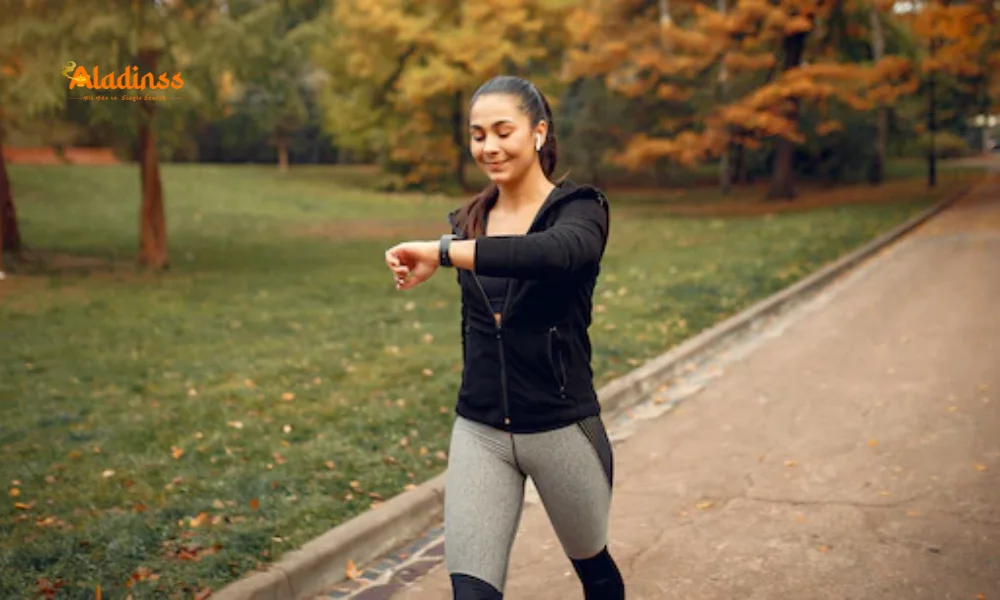Best Time of Day to Exercise for Maximum Health Benefits Boost Your Fitness Fast!

Best Time to Exercise: Unlock Maximum Health Benefits!
Exercise is a cornerstone of a healthy lifestyle, reducing the risk of heart disease, stabilizing blood sugar, and promoting mental well-being. But when is the best time to exercise to maximize these benefits? Should you work out in the morning, evening, or even late at night? Understanding your body’s natural rhythms can help you choose the optimal time for your fitness routine, aligning with your goals—whether it’s weight loss, stress relief, or better heart health. Let’s explore how timing impacts exercise effectiveness and how to tailor your schedule for peak results.
The body operates on a circadian rhythm, a 24-hour cycle that regulates sleep, hunger, and energy levels. Exercising in sync with this rhythm can enhance physical and mental outcomes. Morning workouts, for instance, align with increased cortisol levels, boosting metabolism and energy for the day. Evening sessions, on the other hand, leverage peak energy levels for intense workouts. Exercise timing depends on individual needs, but consistency is key to reaping long-term benefits.
Morning Workouts: Kickstart Your Day
Exercising in the morning, particularly between 8 AM and 11 AM, aligns with the body’s natural cortisol surge, a hormone that enhances alertness and metabolism. This makes morning workouts ideal for boosting energy levels and setting a positive tone for the day. Studies suggest that morning exercise can improve insulin sensitivity, helping regulate blood sugar levels and reducing the risk of diabetes. For those with heart health concerns, morning workouts have been linked to a lower risk of cardiovascular issues, especially in women.
Morning exercise also promotes consistency, as it’s less likely to be disrupted by daily commitments. A brisk walk, yoga session, or light cardio during this time can enhance mental clarity and productivity. For individuals aiming to manage weight, morning workouts may increase fat-burning efficiency due to the body’s fasted state after sleep. Starting with a short 10-minute session and gradually increasing duration can make morning routines sustainable.

Evening Workouts: Harness Peak Energy
For those who thrive on high-intensity workouts, the evening hours between 4 PM and 7 PM are often ideal. During this period, the body’s energy levels peak, muscle strength is at its highest, and coordination is optimal. This makes evening workouts suitable for strength training, running, or other vigorous activities. Evening exercise can also serve as a stress reliever, helping to unwind after a demanding day and promoting mental health.
Research indicates that evening workouts may improve cardiovascular health by reducing stress hormones like cortisol, which can spike during the day. For individuals with demanding schedules, evening sessions offer flexibility, allowing them to exercise after work or other commitments. However, it’s important to avoid overly intense workouts close to bedtime, as they may disrupt sleep by elevating adrenaline levels.
Nighttime Exercise: Flexibility and Caution
Exercising at night, typically after 7 PM, can be beneficial for those with unconventional schedules. As body temperature rises in the evening, muscle flexibility increases, reducing the risk of injury during stretching or low-impact exercises like yoga or Pilates. Nighttime workouts can also promote relaxation, helping individuals wind down before sleep. However, strenuous exercise late at night may interfere with the body’s wind-down process, potentially disrupting sleep quality.
For night owls, a light workout, such as a walk or gentle stretching, can align with their natural rhythms. The key is to avoid high-intensity activities that elevate heart rate excessively, as this could lead to difficulty falling asleep. Nighttime exercise is best suited for those aiming to improve flexibility or relieve tension without compromising their sleep cycle.
Tailoring Exercise to Your Goals
The best time to exercise varies depending on your fitness objectives. Here’s a breakdown of how different times align with specific goals:
- Weight Loss: Morning workouts may enhance fat burning due to the body’s fasted state, increasing metabolic rate throughout the day.
- Heart Health: Morning exercise, particularly between 8 AM and 11 AM, can reduce cardiovascular risks and improve blood pressure control.
- Stress Relief: Evening workouts help reduce stress hormones, promoting relaxation and mental well-being.
- Muscle Building: Evening sessions, when muscle strength peaks, are ideal for strength training and high-intensity workouts.
- Sleep Quality: Light nighttime exercise, such as yoga, can promote relaxation but avoid intense workouts to prevent sleep disruption.
Understanding your goals allows you to choose a time that maximizes benefits. Consistency is crucial, so select a time you can commit to daily, gradually increasing duration and intensity as your body adapts.
The Role of Circadian Rhythm in Exercise
The body’s circadian rhythm plays a pivotal role in determining the effectiveness of exercise. This internal clock regulates physiological processes, including hormone production, metabolism, and energy levels. Aligning workouts with this rhythm can enhance performance and health outcomes. For example, cortisol levels peak in the morning, making it an ideal time for energizing workouts that boost metabolism. In the evening, higher body temperature and muscle flexibility support more intense physical activity.
Disrupting the circadian rhythm with irregular exercise schedules can reduce the benefits of physical activity. Establishing a consistent workout routine, whether morning, evening, or night, helps the body adapt and optimize its response to exercise. This consistency also supports better sleep, appetite regulation, and overall well-being.
Health Benefits of Regular Exercise
Regardless of timing, regular exercise offers numerous health benefits, including:
- Cardiovascular Health: Reduces the risk of heart disease and stroke by improving blood circulation and lowering blood pressure.
- Weight Management: Burns calories, increases metabolism, and helps maintain a healthy body weight.
- Mental Health: Releases endorphins, reducing stress, anxiety, and depression while boosting mood.
- Blood Sugar Control: Enhances insulin sensitivity, helping manage diabetes and prevent metabolic disorders.
- Muscle and Bone Strength: Strengthens muscles and bones, reducing the risk of osteoporosis and injuries.
These benefits are amplified when exercise is performed consistently at a time that suits your lifestyle and goals. Starting with short sessions and gradually increasing intensity ensures sustainability and minimizes the risk of burnout or injury.
Practical Tips for Building an Exercise Routine
To create an effective exercise routine, consider the following tips:
- Start Small: Begin with 5-10 minute sessions to build a habit, gradually increasing to 30-60 minutes.
- Choose the Right Time: Align workouts with your schedule and energy levels, whether morning, evening, or night.
- Consult Experts: Work with a trainer or fitness professional to learn proper techniques and avoid injuries.
- Mix Activities: Combine cardio, strength training, and flexibility exercises for a balanced routine.
- Stay Consistent: Exercise at the same time daily to align with your circadian rhythm and maximize benefits.
These strategies help ensure that exercise becomes a sustainable part of your lifestyle, delivering long-term health benefits regardless of the time chosen.
Considerations for Special Populations
Certain groups, such as those with medical conditions or specific lifestyles, may need tailored exercise timing. For individuals with diabetes, morning workouts can optimize blood sugar control. Those with heart conditions may benefit most from morning exercise to reduce cardiovascular strain. Night shift workers, meanwhile, may find nighttime workouts more practical, provided they prioritize light activities to preserve sleep quality.
Consulting a healthcare provider or fitness expert can help customize exercise schedules for specific needs. For example, pregnant women or older adults may prefer low-impact morning or evening sessions to avoid fatigue. Personalizing the timing and type of exercise ensures safety and effectiveness for all individuals.
Balancing Exercise with Lifestyle
The best exercise routine is one that fits seamlessly into your daily life. Busy professionals may prefer morning workouts to free up evenings, while students or parents might find evening sessions more convenient. The key is to choose a time that minimizes disruptions and aligns with your energy levels. For example, morning workouts can energize those with demanding daytime schedules, while evening sessions suit individuals who feel more active later in the day.
Incorporating exercise into your routine also requires planning for rest and recovery. Overexertion, especially during intense evening or nighttime workouts, can lead to fatigue or injury. Balancing exercise with adequate sleep and nutrition ensures long-term success and prevents burnout.
Conclusion: Find Your Ideal Exercise Time
The best time to exercise depends on your goals, lifestyle, and body’s natural rhythms. Morning workouts boost metabolism and heart health, evening sessions maximize strength and stress relief, and nighttime exercises enhance flexibility. By aligning your routine with your circadian rhythm and maintaining consistency, you can unlock the full benefits of physical activity. Start small, seek expert guidance, and tailor your schedule to fit your needs for a healthier, more active life.
Comment / Reply From
No comments yet. Be the first to comment!






